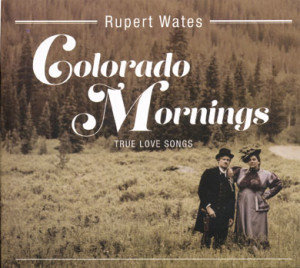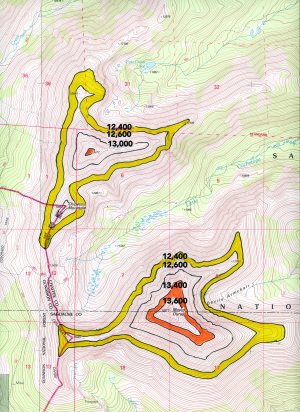By Hal Walter
When I first moved here in 1991, we had no snail mail delivery. I circulated a petition to get that started, and had one person refuse to sign, because her weekly visits to the post office were the only time she had a chance to visit with other people.
Phone service was by landline and often it went out for days at a time. Cell phones were unheard of, and dial-up Internet was still a few years off.
We didn’t have TV, though the previous owners had installed an aerial antenna that was better at attracting lightning strikes than it was network reception. Movies were rented on VHS tape from a small but busy business in Westcliffe.
As someone who makes part of his income selling editing and writing services, hitching a ride on the digital locomotive was not an option. It’s all very fuzzy to me how the Internet dug its tendrils into my existence here, a blur of modem-to-modem file transmissions, then the early days of dial-up Internet services like Earthlink and text-only email, followed by satellite dishes, and, finally, wireless broadband.
Similarly, I’ve been through several generations of cell phones, from bag phones to flip phones to smart phones that mostly didn’t work around here. Now I have an AT&T Apple iPhone 6 that works in more locations, and also has WiFi calling that ties into the aforementioned broadband here at the house, virtually rendering the land line obsolete.
A couple of years ago, in order to help my Internet provider get better service here, I packed equipment for a new broadband tower on burros to the top of a mountain on nearby Bear Basin Ranch. Among this equipment were two solar panels that I managed to lean inside opposite panniers and tie together with baling twine to transport the short distance up the mountain. I thought the visual was interesting so I took a couple of photos.
Later I started a little speaking circuit that began as a way to promote my book Full Tilt Boogie, then evolved into a discussion about autism and the notion of “endurance for life.” As part of this talk I put together a short slideshow and included one of the photos of the burro packing the solar panels. For some reason that picture has been a real crowd-pleaser. I guess it’s the irony of low-tech meeting high-tech.
From this new tower on the nearby mountain, I can now run my cell phone, watch movies on Netflix, post color photographs on Facebook, listen to music on Spotify and talk to my employers in Australia via Skype. All at the same time, if I wish. It’s odd how easy it is to take all of this technology for granted and forget that just a few years ago, none of this was even possible.
[InContentAdTwo]
Sometimes even now I am reminded how fragile this all is.
The tower that provides all this is fully powered by those two solar panels I packed up there. Recently during a cold snap after a major snowstorm I got a message from Mike, who owns the Internet service, that there was a problem with the batteries charging, probably snow on the panels.
I strapped on snowshoes and used ski poles to climb in the extreme wind chill up to the tower, finding not only snow but also a thick layer of ice covering the panels. I brushed the snow away, then used the plastic baskets on my ski poles to scrape the ice. It was slow going at first, but once the sun found the dark background the panels warmed and began to soften the remaining ice. The batteries started charging immediately.
A few weeks later a severe windstorm, actually a low-level jet stream event, swept through the area, uprooting and snapping countless large ponderosa pines and causing a good deal of property damage in the area. That morning I received another message from Mike, asking if I could get up the mountain to check the tower. He suspected the solar panels were toast.
The wind was still raging when I made the trek up the hill, and I found the panels undamaged and still in place. I looked over all the external wiring. Nothing seemed disconnected. I hunkered out of the wind behind a nearby rock and used my cell phone to call Mike and report what I’d found. He asked me to take a look inside the ice chest that houses the batteries and electronics.
So I opened the box and looked everything over. Nothing seemed amiss. I closed it up and prepared to head down the hill, disappointed that I’d been unable to determine the problem, and also well aware that when the batteries died in just a few hours I’d be back to the pre-Internet dark ages in the blink of an eye. I might have to drive into town to update the website I edit, the same way I used to have to fetch my snail mail.
For some reason, I decided to look over the wiring once more before heading back down and discovered a wire that was loose inside the power supply box on one of the panels. The screw that held it in place had clearly worked its way loose due to wind vibration. I was able to pop the box and reconnect the wire. Soon the batteries were charging again.
As I descended the mountain into the face of the jet stream, I reflected on the evolution of communications here in the Wet Mountains. It seemed only a loose wire separated the past and present.
Hal Walter is a 30-year resident of Custer County and the author of Full Tilt Boogie – A journey into autism, fatherhood, and an epic test of man and beast.



Most of the places that I lived in Colorado had sketchy, if any, internet, phone and TV, but I could usually get something to work well enough. My work (architecture) depends on internet access. Having a phone is useful if annoying, and I don’t need or want TV. Now I live Back East in the foothills of the Blue Ridge Mountains with the damn blinking red light of a cell tower in sight, and barely have internet or phone if I adjust the antenna just right every time the clouds change.
This is the first place I’ve lived that has any cell coverage at all, and in two years of phone ownership I’ve talked to just one person on the thing — a friend in Howard, Colorado who has a land line but no internet. None of my friends back there have internet, though it’s available to some of them on the north side of the ridge. They seem to want it about as much as I want TV, which is not at all.
In the 1950s my parents had a little 160 acre “ranch” near Hartsel. I think they paid about $2,000 for it, complete with house, barn corral and several outbuildings. No electricity, no phone, no pavement anywhere in South Park. And a dry well, which they couldn’t overcome with a new 400′ drill that hit nothing but shale oil. Work (a viable ranch was not an option) was on the other side of Wilkerson Pass. Dad had a TV shop and Mom a portrait studio in Fountain, which was an untenable commute. They sold the place at a loss, and in the mid 1990s I saw it again for sale at $250/acre. I was tempted, but broke.
Now someone like me could live and work there with solar panels, a windmill and a satellite dish. I wouldn’t have to drive to Divide or Woodland Park or The Springs very often except maybe to buy lumber or a car or pretty much anything material for which delivery fees are too high. Water would still be a problem, but the roads are good enough now that hauling it in wouldn’t be too difficult or expensive.
I imagine that the place is now worth much more than $250/acre, and that’s largely due to the availability of internet access, the development of off-grid power sources and at least one paved all-season road. Such places have remained more or less empty of people because of lack of means to make a living there. I wonder how long before Hartsel looks like Woodland Park?
}}}}